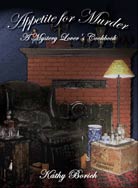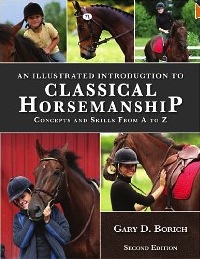V for Vendetta: British Fried Bread and Egg
Year Released: 2006
Directed by: James McTeigue
Starring: Natalie Portman, Hugo Weaving, Stephen Rea, John Hurt
(R, 132 min.)

"Malice sucks up the greatest part of its own venom and poisons itself." Michel de Montaigne
We’ve all seen them. Those ragged bumper stickers whose ideas are as worn and outdated as the car’s paint job. Guess what! These guys have put together a movie, and its plot is as convoluted and clichéd as the slogans on their rusty vans.
Set in the year 2020, in the “futuristic landscape of totalitarian Britain,“ V for Vendetta chronicles the exploits of a masked man intent on restoring freedom to Britain by - catch your breath - blowing up Parliament. It seems Merry Old England is not too merry any more; nor is it in any way gay. It has survived the chaos of some rather dicey early decades of the 21st century by becoming a fascist state complete with a secret police and tyrannical dictator. Of course, the latter is a homophobic right wing religious conservative who has concocted his home brewed version of bioterrism to ascend to power.
The whole project is ripe with irony. Let me count the ways. The first concerns the rearranged release date, originally set to be Nov. 5th, 2006, to correspond to the historical attempt to bomb Parliament in 1605, but delayed by four months in wake of the London bombings July of that year. Not only are Islamic terrorists nowhere to be seen in V, but they are, by proxy, victims of a virulent secret police who decapitate a gay Englishman guilty of owning a Koran. He risks secreting a copy of the forbidden book because of the “beauty of its poetry.”
Only a country like America, who produced the film, or England, which was its setting, could value liberty and free speech enough to allow a cinematic protagonist to destroy the Parliament Building. Thus, the filmmakers have to go ahead in time to create their fictitious bogeyman, a fascist England. One need only look at the fate of Theo Van Gogh and other really courageous filmmakers who dared chronicle actual ongoing police state practices to see the convolution here.
The particular buildings V blows up are in themselves symbolically counter productive. First, there is the Old Bailey, the criminal high court of London, turning into a fireworks display as V wields his baton to the strains of Tchaikovsky’s 1812 Overture from atop a nearby building. (Forgive him, Rumpole.) And then there’s Parliament. Why these two symbols of Law and Order -- wouldn’t a more sane choice be the Towers of London? But of course, V is not exactly sane. Nor is he a freedom fighter or even a real terrorist, for that matter.
What he is most is an anarchist, a cleaned up and costumed version of the sixties radicals that made violence a romantic rite of passage, a righteous and almost religious ritual. V tries to steal some of the swashbuckling romance from the other alphabet swordsman, his flowing cape, sharp blade, and poetic utterances straining to be very Zorolike. And if we can’t identify with his virtuous vengeance, there are black and white reruns of The Count of Monte Cristo to help us get it. The mask, which we know must hide a terribly scarred face, and the imprisonment of the lovely and kind Evey (Natalie Portman) echo the Phantom of the Opera.
However, All these fellow caped crusaders cannot make up for the clumsy history of V’s Guy Fawkes’ fashion statement. First of all, his mask covers his entire face with a vacant grin at odds with his tragic history, reducing his poetic musings to incoherent mumbling. And the mask choice of Guy Fawkes, the conspirator who attempted to blow up Parliament and King James I of England with it in the infamous Gunpowder Plot of 1605, might resonate in England where they still have bonfires and burn the traitor in effigy upon them, but he is almost entirely unknown here is America. But maybe that is all for the best, since England still sees the fellow as a traitor and would not perhaps take kindly to the heroic status he is given in V.
And speaking of America, the filmmakers reduce it to a mere epitaph. “The former United States is now the world’s largest leper colony.” Talk about wishful thinking!
A few valiant performances are bright spots in this pontificating propaganda. Perhaps the most interesting is Stephen Rea’s Inspector Finch, an unflappable Scotland Yard bloodhound, his keen intelligence masked behind a dogged and almost vacuous stare.
John Hurt, that wonderfully trained Shakespearean actor, most recently seen as the near comatose invalid unable to utter a word in The Skeleton Key, makes up for his former muteness as the one dimensional Chancellor Sutler, a ranting and raving talking head who communicates with his cabinet via the big screen, the tartar-lined row of his lower teeth as grotesquely amplified as his draconian utterances.
Of course Natalie Portman’s Evey – is that a kind of cryptogram for Everyman? – shows range and glowing innocence, a beauty grounded in common sense, whose “Are you, like, a crazy person?” query to V is perhaps the most honest line in the film.
Unfortunately, even the reasonable Evey is won over to his anarchist ways, -- she and a great deal of her countrymen. And how sad to say that when that architectural beauty, that formidable symbol of English Common Law, the Parliament Building, exploded on the screen, a small but exuberant round of cheers went up from the audience in the theatre I attended.
—Kathy Borich
Film-Loving Foodie
It says quite a bit about the diminished state of futuristic England that a simple breakfast of fried bread and egg would be the cuisine centerpiece of V for Vendetta. Having rescued Evey from some street thugs, V treats her to this British staple to cheer her up, and she cannot get over the delicious taste of real butter -- something most of her fellow countrymen have not had in quite a while.
If I remember correctly, fried bread is also a favorite dish of John Mortimer’s Rumpole of the Bailey, although I feel that the food would be the only part of the film old Rumpole would relish, his rebellions chiefly confined verbal explosions in barrister quarters and domestic relations with Mrs. Rumpole, She Who Must Be Obeyed.
If you like, go to the BBC website link below and prepare yourself a complete, decadent, and delicious full-fledged, cholesterol charged English breakfast. And don’t forget to add a “knob” or two of butter.
British Fried Bread and Egg
Ingredients:
Per person, allow:
- Large egg
- Slice of bread
- A few “knobs’ of butter
For the fried bread:For 'proper' fried bread it's best to cook it in a separate pan. Ideally, use bread that is a couple of days old. Heat a frying pan to a medium heat and cover the base with oil. Add the bread and cook for 2-3 minutes each side until crispy and golden. If the pan becomes too dry, add a little more oil. For a richer flavour, add a knob of butter after you turn the slice.
For the fried eggs:
Break the egg straight into the pan with the fried bread and leave for 30 seconds. Add a good knob of butter and lightly splash/baste the egg with the butter when melted. Cook to your preferred stage, season and gently remove with a spatula.
Recipe Source: BBC Food



 Rainy Day Rentals
Rainy Day Rentals